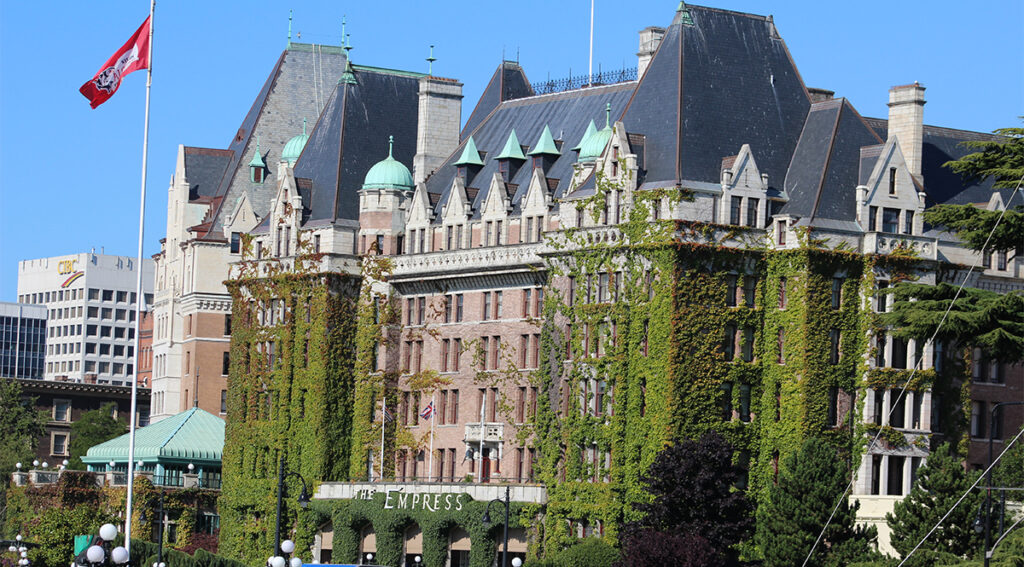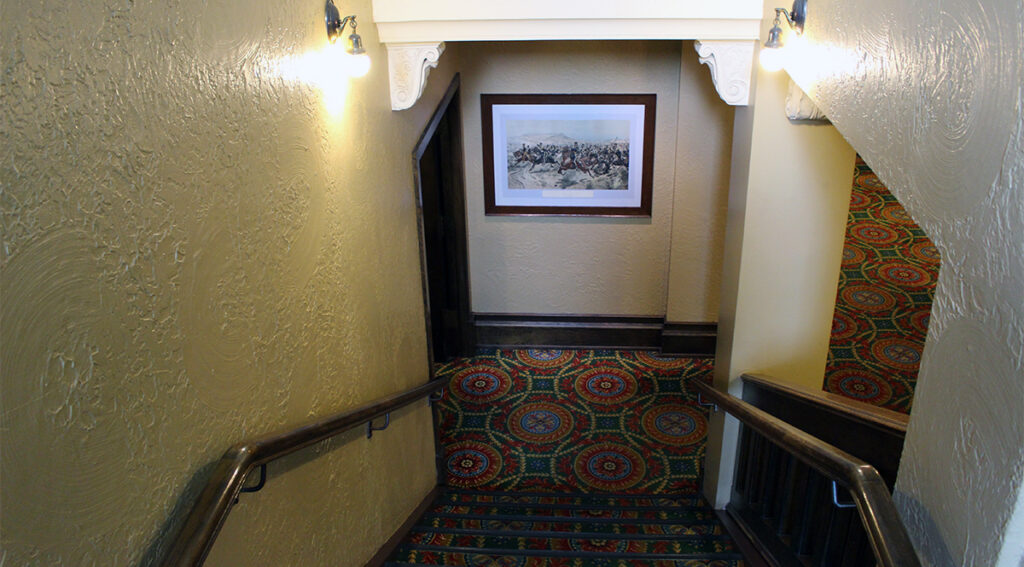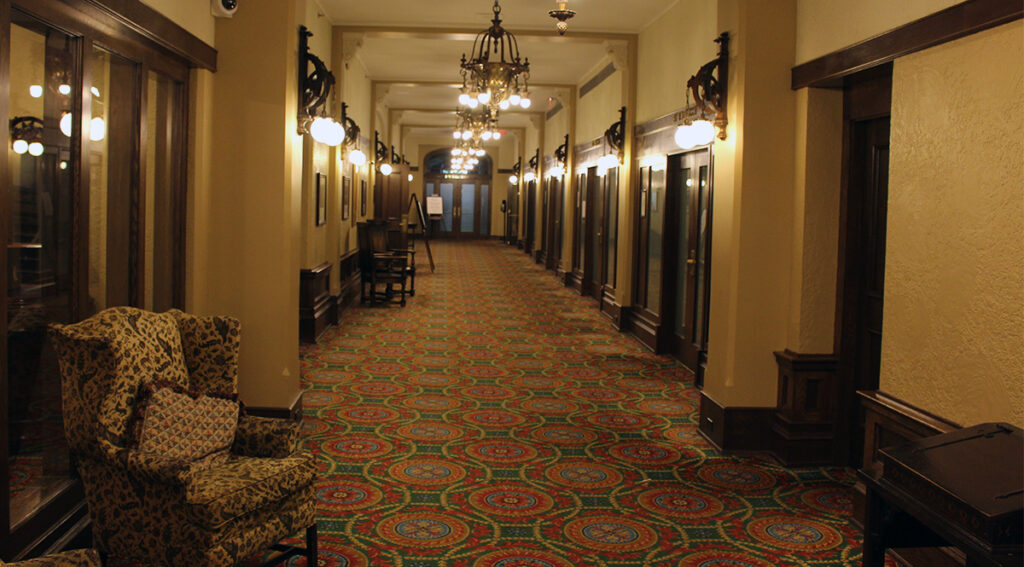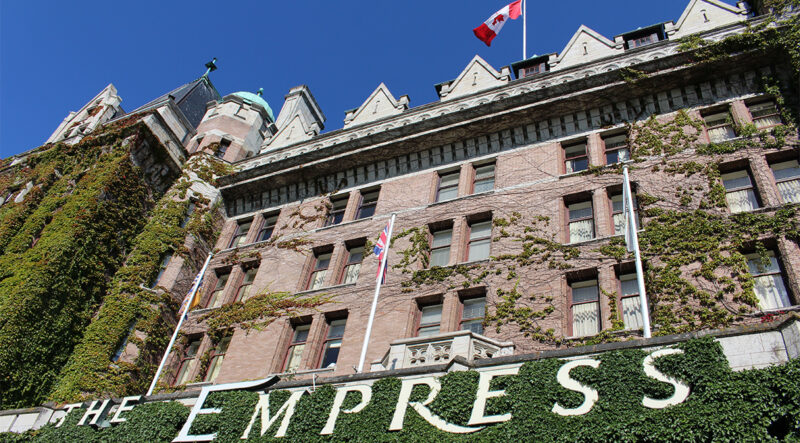Historian and Discover the Past’s Ghostly Walks host John Adams has had a long working relationship with the Fairmont Empress Hotel in Victoria, British Columbia.
It has not always been about acquainting oneself with the resident spirits inside the Châteauesque structure built between 1904 and 1908.
The 71-year-old worked in the hotel during the 1960s and was a lot more skeptical when it came to things that went bump in the night.
“I was just a teenager,” he admitted, in an April phone conversation. “I didn’t believe in this stuff, but it was always kind of creepy being up there.”
There are various apparitions spotted within the halls of the Empress, as well as the exterior, but at least three well-known residents are haunting the corridors of the century-old hotel.
Just before Adams started working at the Empress, the original chambermaid rooms were converted into offices for the executive. His summer job was to clean those offices during the afternoon or evening shifts.
“There was no air conditioning, of course, but there were cold spots,” he recalled. “I thought I saw something and I ended up saying, ‘Okay, pull yourself together. You’re just a kid in this place. You don’t believe in ghosts.’”
It was during that job that Adams experienced the inexplicable. Further to the cold spots, he caught glimpses of something or someone out of the corner of his eye.

The Empress Hotel, on Government Street in Victoria, B.C., is home to a menagerie of spirits and past scandals.
In the company of Lizzie McGrath
That someone could be former chambermaid Lizzie McGrath. The former employee was readying herself for bed one evening in 1909 and would usually say her rosary on the fire escape outside of her room on the sixth floor.
It was common for employees to live on the premises of the hotel back then, but on that particular day, renovations were happening at the hotel and the fire escape was not there to support McGrath as she climbed out the window. She plunged to her death, just to the right of the Empress’ main entrance.
Ian Gibbs, the author of Victoria’s Most Haunted and fellow Ghostly Walks host, shared Lizzie’s story, right from her departure from her home in Ireland.
When her apparition is seen, it’s usually in the spot where she landed, wearing her uniform and clutching her rosary, or she’s seen going about her duties.
“I like her story just because we know so much about her and I think she’s relatable,” Gibbs said, during an April phone interview. “I always end that story by saying, ‘Here we are over a hundred years later and we’re still talking about her.’”
Garçon, there’s an elevator in my room
Another resident spirit walking the halls of the sixth floor is an older woman who seems to have forgotten which room was hers.
It is suspected that she is a former guest who died in her room of natural causes sometime after World War II.
Known as Margaret in Gibbs’ book, she would leave her home in Calgary just after Christmas and winter in Victoria. Her residence was on the six-floor in the recently added tower.
Her lifeless body had been discovered by one of the managers of the hotel, but that did not prevent them from using the room. Eventually, the room would be deemed unrentable.
“Since then things started happening in the room and they stopped renting it out on a regular basis,” Adams said. “It was that room that was chosen for the location of an elevator.”
The hotel was looking to open up rooms that were used as attic storage space on the eighth floor during the 1980s. Oftentimes, Adams will ask guests on his ghost walks if they are staying in the hotel and they will point to the rooms where the older woman is seen.
“After that, more things began to happen,” he said. “We point to the rooms near the sixth floor.”
There’s an old woman who knocks on the door in the middle of the night. A full-bodied apparition has been sighted, and oftentimes guests will help the woman find her room only to have her vanish, typically in front of the elevator shaft.
“At that point, they realize that there’s something strange and they head back to their room,” Adams recalled. “I heard the stories from guests and some of the staff have encountered this sort of thing.”
He assured that it’s not a scary story. It’s simply an old woman who is looking for her room, which is suspected to be the one that’s been converted into an elevator shaft.

The staircase leads down to the basement men’s rooms at the Empress hotel. The spectre of Francis Rattenbury is said to be seen in this area of the hotel.
Architect and homewrecker
Famous British Columbian architect, Francis Rattenbury, was renowned for his work in Victoria and Vancouver. He emigrated to Canada in 1891 from his home in Leeds, England. Victoria’s parliament building, an awe-inspiring example of Romanesque architecture was his biggest achievement, although coming in $400,000 over budget.
And he also designed the Empress Hotel.
It was, however, his personal life that was the talk of the provincial capital. He left his wife and mother of his two children, Florence Nunn, in 1928 for the much younger Alma Pakenham. After Rattenbury moved out of the home in Oak Bay to stay with Pakenham.
“Rattenbury had a roaming eye, and apparently, he had affairs, but the one that stands out was the one he had with Pakenham, the piano player at the Empress Hotel.”
During tea time, the Empress would have a piano player perform, and during Rattenbury’s time, Pakenham tickled his ivories.
“In the end, he told his wife, Florie, to clear out because Alma was moving in,” Adams recalled. Florie was not having any of it, but Alma moved in anyway.”
Nunn became withdrawn and depressed and Pakenham was attempting to drive her out of the house by getting up and playing the Death March from Saul.
He also publicly flaunted his infidelities around town, causing a lot of his business partners and friends to shun him.
“Rattenbury and his new wife were pariahs in society,” Adams said, recalling Nunn eventually died of cancer not long after the divorce. “Rattnebury and Alma, at this point, we’re well beyond the pale.”
They did not leave Victoria immediately, but Rattenbury and Pakenham moved to Bournemouth, on the south coast of England in 1929. He began to drink, and Pakenham was not wanting to stay at home while he got sauced. Their chauffeur, George Stoner was 19, and he caught her eye.
“The old man seemed to figure out what was going on,” Adams shared, “And one night, while he was asleep in his chair, Alma was upstairs, and George crept in with a croquet mallet. Anyway, he brought it down across the old man’s skull. He was senseless, but not quite dead and Alma came rushing down the stairs.
“The neighbours called the police and, in the end, Rattenbury did die.”
Rattenbury died in 1935 and he is buried in a grave in Bournemouth that did not have a marker until very recently.
Pakenham initially confessed, to protect her young lover, and was acquitted of murder and of being an accessory, but still committed suicide by stabbing herself six times with a pair of scissors and toppled into the River Stour.
Stoner was sentenced to hanging.
The whole life has been captured in a stage play called “Cause Célèbre”. They don’t use the real names, Adams said, but it’s the same events that transpired both in Canada and England.
Gibbs shared the locations where one can run into Victoria’s most famous pariah at the Empress hotel. Not surprisingly, Rattenbury has been seen by the stairs where his portrait hangs, as well as the basement where the men’s room is located.

Many a spirit has been sighted at the Empress Hotel.
It’s all about the ‘history and mystery’
For Gibbs, who calls Victoria one of Canada’s most haunted cities, it’s all about the social history of ghost stories. He immigrated to Canada from England and brought with him his Celtic roots.
“I’m fascinated by that sort of field of history, what was normal, what was on and how people lived their lives,” he said. “I’m going to steal a little phrase from Barbara Smith, who is an amazing author of ghost books, and is a close friend, ‘It’s always about the history and the mystery for me’.
“I would agree with that. I’m not a person who likes to go on a ghost investigation,” he said. “I don’t want to bring anything home.”
Of course, that’s because Gibbs can pick up on feelings in haunted locations. He hasn’t had any experiences with the spirit world at the Empress, but he does feel things.
“I do a lot better when there aren’t as many people around,” he said. “I kind of call it my ‘spidey-sense’. I’ll be like, ‘Ooh, something’s weird.’ If there are people around, it gets kind of lost.”
Depending on how much he lets down his guard, he can absorb more information. When he travels to empty buildings, or even buys a house, he picks up on energy.
There are plenty of spirits within the halls of the Empress, but Lizzie, Margaret and Rattenbury are the three that endure. Other common run-ins are an Indigenous construction worker being sighted on the sixth floor, and another, perhaps one of the most common hotel tropes, is the disappearing, altruistic bellhop who continues to work in the afterlife.
Some hotels are not keen on sharing their ghost stories. Adams and Gibbs both confirm that the Empress is one of them.
Regardless of their approach to dealing with unwanted guests, spectral or otherwise, the Empress has its rich history shared to visitors through the ghosts that haunt it.

